Special Report
Worst Cities to Find a Job for Recent Graduates

Published:
Last Updated:

The U.S. economy has added over 1 million jobs already this year, and the unemployment rate has hovered around 4%, lower than it has been in over a decade. With the strongest job market in years, today’s college graduates should have a relatively easy time finding gainful employment compared to their peers in years past.
Of course, finding a job after college is still a challenging and stressful experience. For many young Americans, this will be their first full-time job, and they likely will have little relevant experience to put on their resume. Also, with college debt levels at record highs, there is tremendous pressure for students to begin paying off their massive loans. The average loan debt for students who graduated in 2017 is nearly $40,000.
With these factors in mind, graduates who have not yet lined up a job must often choose where to move to look for work, and our research suggests that while in many U.S. cities employers are certainly hiring skilled fresh graduates, other places appear to have little to offer these graduates. In these places, job growth has been and continues to be poor, and wages for young Americans tend to be low. These places also offer relatively few jobs in the kinds of industries four-year college educated workers tend to prefer.
24/7 Wall St. created an index of three components: job growth, wages for young workers, and the concentration of white-collar jobs in U.S. metropolitan areas. Nationwide, these industries include professional and business services, education and health services, information, and financial activities. The 40 U.S. metropolitan areas on our list compare the least favorably in these measures.
While in some U.S. metropolitan areas, 22-24-year olds are hired by the thousands and are paid an average monthly wage of $2,000 to $3,000, most of the metropolitan areas on our list hire just a few hundred young workers each month, and in many cases the young workers earn less than $1,500 a month on average. While the national concentration of white-collar jobs in many metropolitan areas is 43.0%, is it closer to 30% in many of these metro areas.
Martin Kohli, chief regional economist at the U.S. Bureau of Labor Statistics, told 24/7 Wall St. that these areas “are really, really very small. They’re not near any of the large areas, and that suggests that people in these job markets are not going to have a lot of employers bidding for their services.” Indeed, very few jobs are added across all age groups in many of the smaller cities. They also tend to have high unemployment and poverty rates, and low college attainment rates.
Click here to see the worst cities to find a job for recent graduates.
Click here to see our methodology.

40. Rocky Mount, NC
> White-collar sector employment: 34.3% (lowest 10%)
> Avg. monthly wage, 22-24 year olds: $1,744
> Poverty rate: 17.8%
> June unemployment rate: 6.4% (highest 10%)
> Adults with bachelor’s degree: 17.0% (lowest 10%)
[in-text-ad]

39. Hammond, LA
> White-collar sector employment: 39.4%
> Avg. monthly wage, 22-24 year olds: $1,524 (bottom 10%)
> Poverty rate: 20.4% (highest 10%)
> June unemployment rate: 6.8% (highest 10%)
> Adults with bachelor’s degree: 20.1% (lowest 20%)

38. Lawton, OK
> White-collar sector employment: 36.4% (lowest 20%)
> Avg. monthly wage, 22-24 year olds: $1,650
> Poverty rate: 14.8%
> June unemployment rate: 4.5%
> Adults with bachelor’s degree: 20.4% (lowest 20%)

37. Lake Havasu City-Kingman, AZ
> White-collar sector employment: 32.8% (lowest 10%)
> Avg. monthly wage, 22-24 year olds: $1,783
> Poverty rate: 17.8%
> June unemployment rate: 5.7% (highest 20%)
> Adults with bachelor’s degree: 11.3% (lowest 10%)
[in-text-ad-2]

36. Clarksville, TN-KY
> White-collar sector employment: 35.0% (lowest 20%)
> Avg. monthly wage, 22-24 year olds: $1,677
> Poverty rate: 15.5%
> June unemployment rate: 5.1%
> Adults with bachelor’s degree: 22.8%
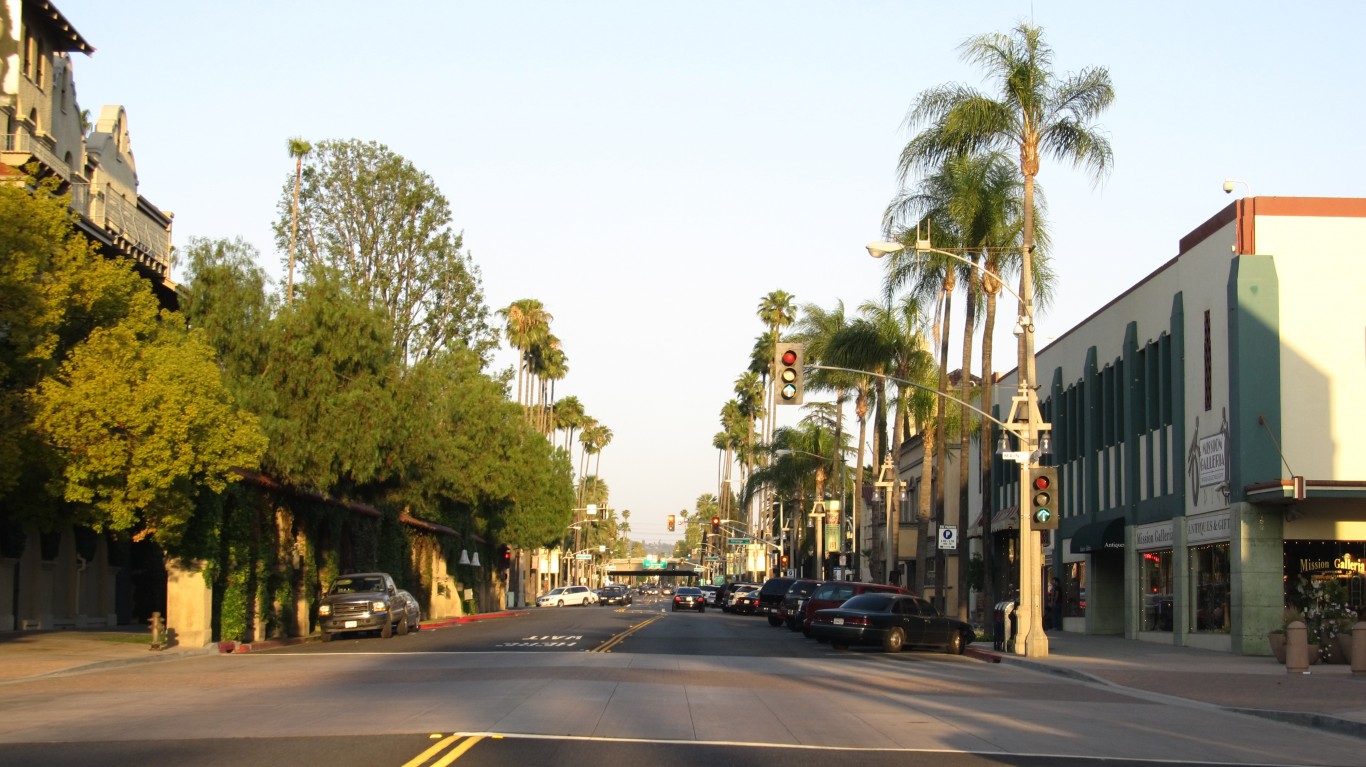
35. Riverside-San Bernardino-Ontario, CA
> White-collar sector employment: 37.3%
> Avg. monthly wage, 22-24 year olds: $1,730
> Poverty rate: 16.4%
> June unemployment rate: 4.7%
> Adults with bachelor’s degree: 21.0%
[in-text-ad]
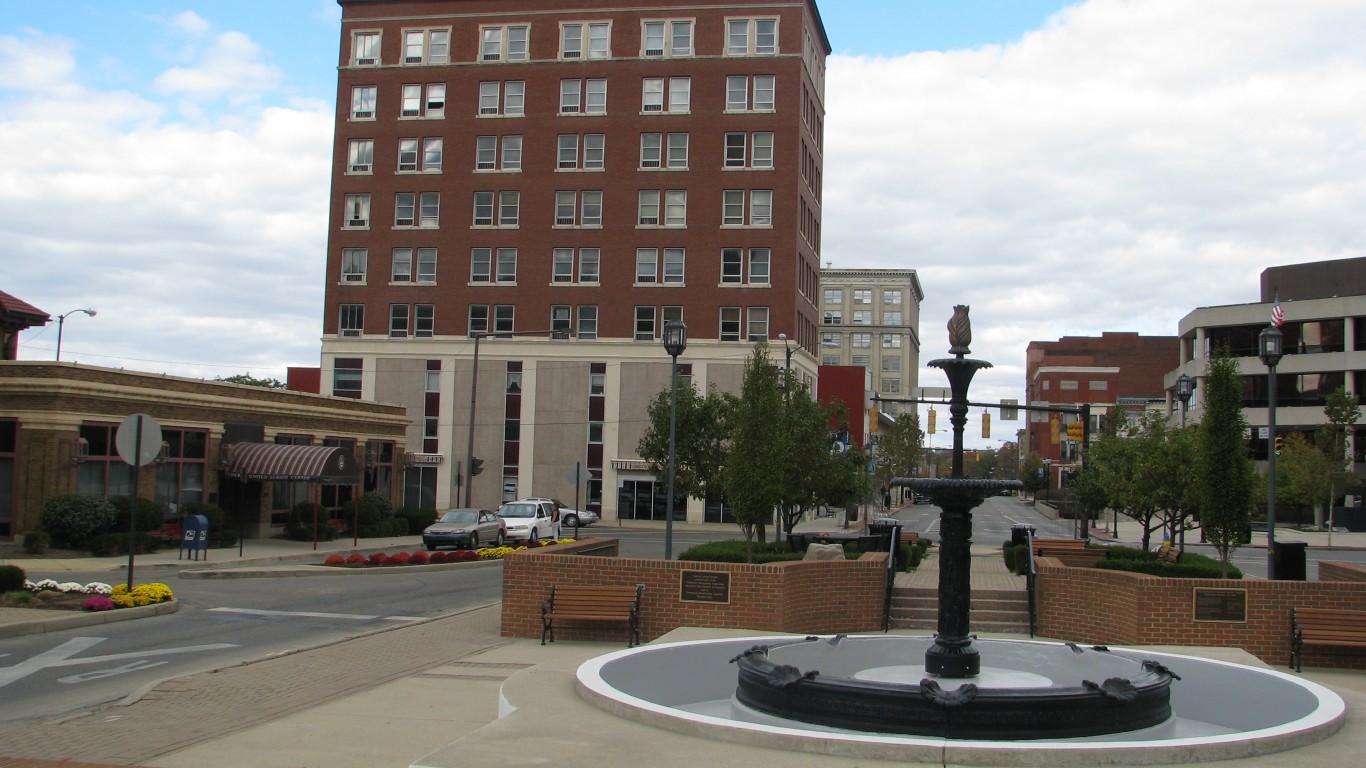
34. Springfield, OH
> White-collar sector employment: 35.4% (lowest 20%)
> Avg. monthly wage, 22-24 year olds: $1,670
> Poverty rate: 15.6%
> June unemployment rate: 5.2% (highest 20%)
> Adults with bachelor’s degree: 17.9% (lowest 10%)

33. Gulfport-Biloxi-Pascagoula, MS
> White-collar sector employment: 36.0% (lowest 20%)
> Avg. monthly wage, 22-24 year olds: $1,597 (bottom 20%)
> Poverty rate: 18.8% (highest 20%)
> June unemployment rate: 5.8% (highest 10%)
> Adults with bachelor’s degree: 21.7%
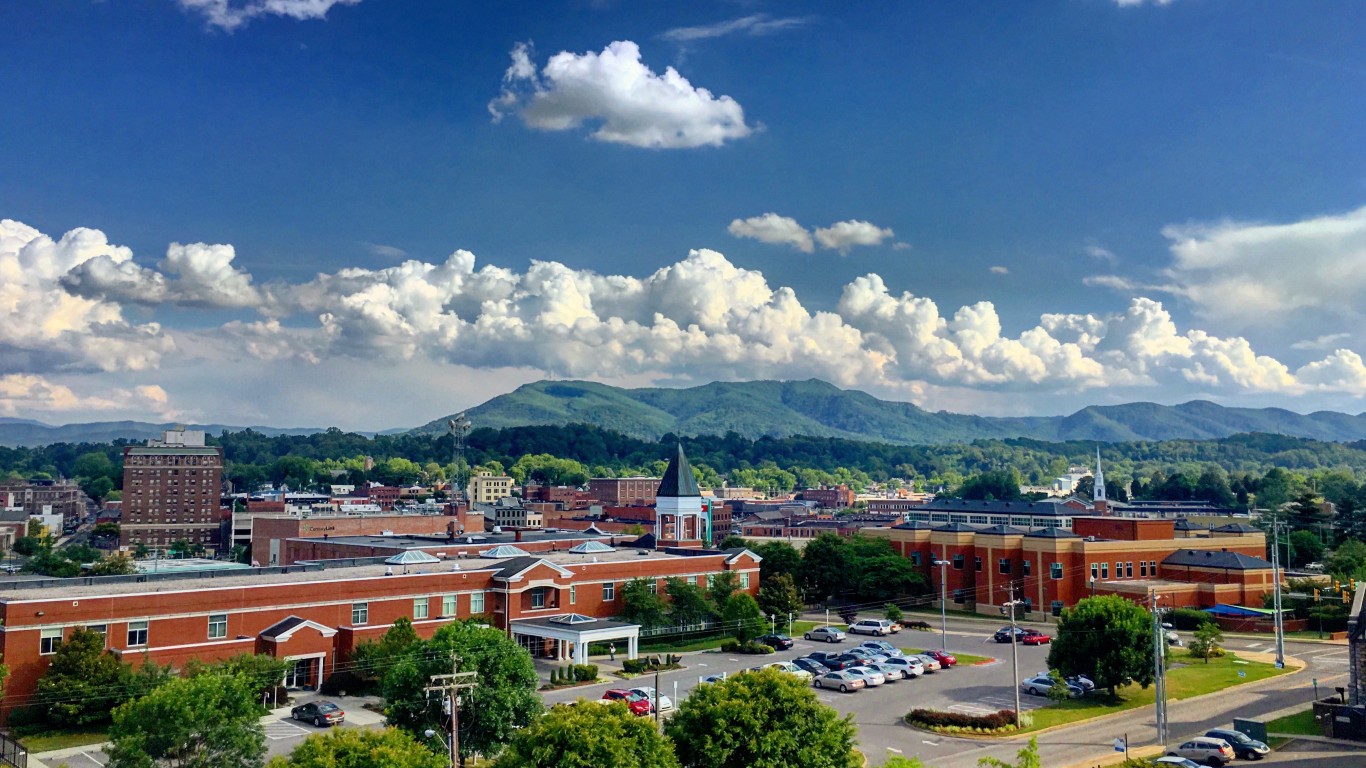
32. Johnson City, TN
> White-collar sector employment: 39.8%
> Avg. monthly wage, 22-24 year olds: $1,479 (bottom 10%)
> Poverty rate: 17.2%
> June unemployment rate: 4.5%
> Adults with bachelor’s degree: 25.5%
[in-text-ad-2]
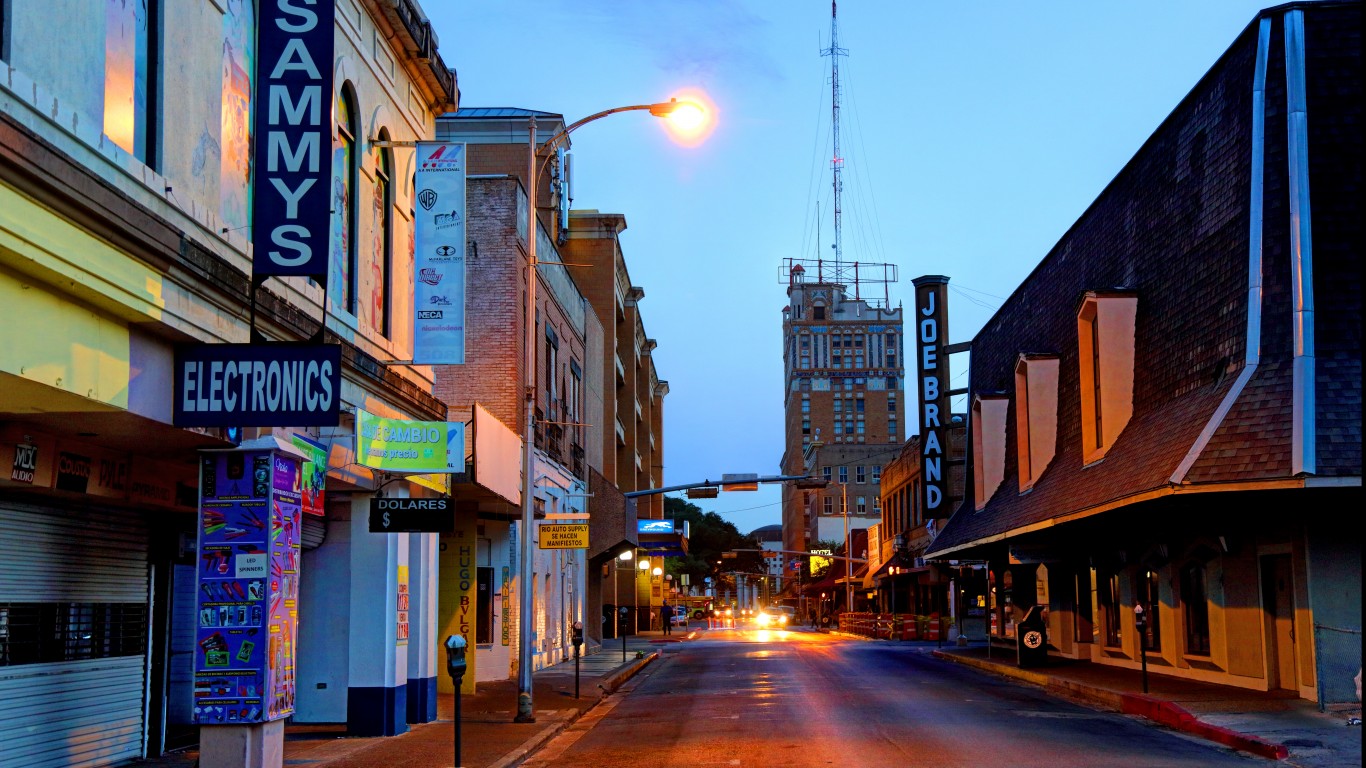
31. Laredo, TX
> White-collar sector employment: 39.2%
> Avg. monthly wage, 22-24 year olds: $1,515 (bottom 10%)
> Poverty rate: 33.0% (highest 10%)
> June unemployment rate: 4.3%
> Adults with bachelor’s degree: 17.2% (lowest 10%)

30. Ocean City, NJ
> White-collar sector employment: 40.5%
> Avg. monthly wage, 22-24 year olds: $1,438 (bottom 10%)
> Poverty rate: 11.9%
> June unemployment rate: 5.9% (highest 10%)
> Adults with bachelor’s degree: 31.5%
[in-text-ad]
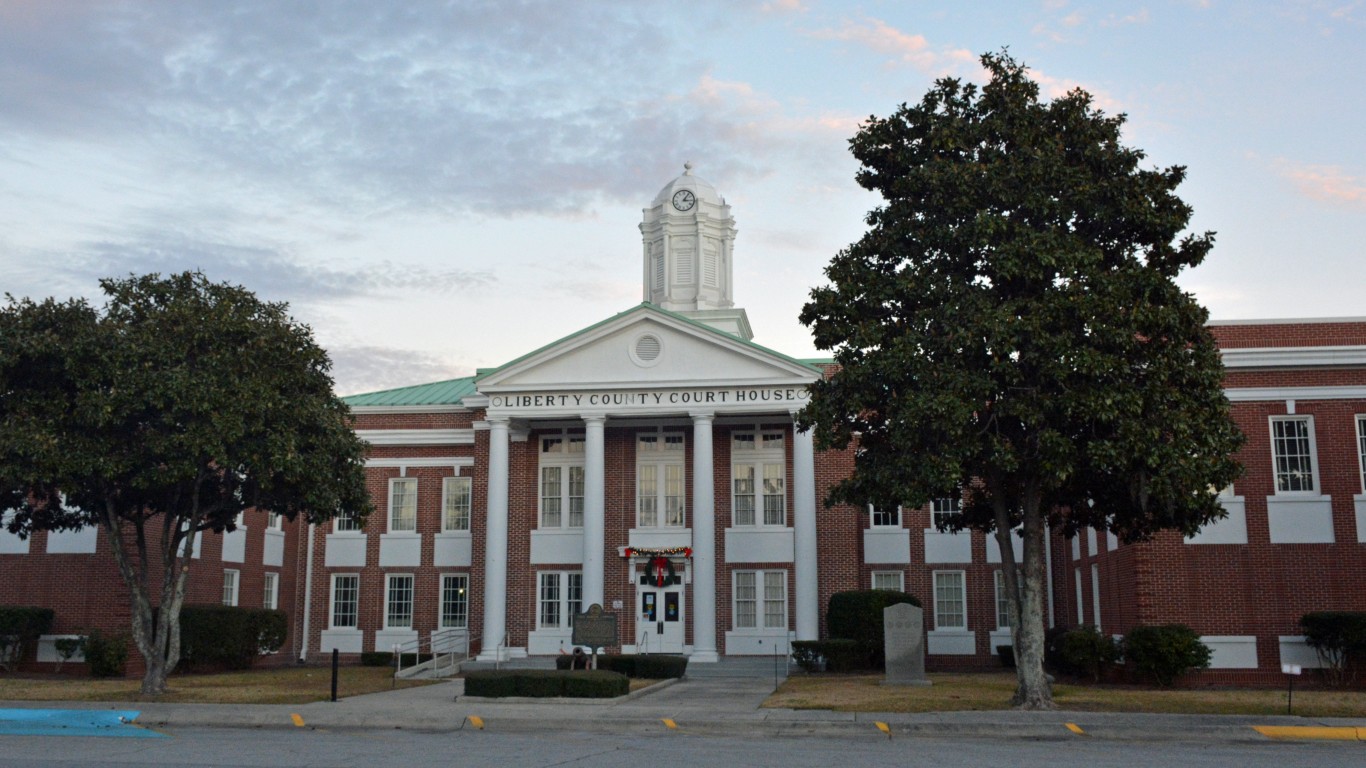
29. Hinesville, GA
> White-collar sector employment: 36.0% (lowest 20%)
> Avg. monthly wage, 22-24 year olds: $1,638
> Poverty rate: 14.4%
> June unemployment rate: 4.5%
> Adults with bachelor’s degree: 16.0% (lowest 10%)

28. Sebring, FL
> White-collar sector employment: 36.1% (lowest 20%)
> Avg. monthly wage, 22-24 year olds: $1,626 (bottom 20%)
> Poverty rate: 18.8% (highest 20%)
> June unemployment rate: 5.4% (highest 20%)
> Adults with bachelor’s degree: 13.0% (lowest 10%)

27. Muskegon, MI
> White-collar sector employment: 31.7% (lowest 10%)
> Avg. monthly wage, 22-24 year olds: $1,762
> Poverty rate: 19.1% (highest 20%)
> June unemployment rate: 5.1%
> Adults with bachelor’s degree: 16.6% (lowest 10%)
[in-text-ad-2]

26. Madera, CA
> White-collar sector employment: 32.3% (lowest 10%)
> Avg. monthly wage, 22-24 year olds: $1,792
> Poverty rate: 20.3% (highest 10%)
> June unemployment rate: 7.3% (highest 10%)
> Adults with bachelor’s degree: 11.8% (lowest 10%)
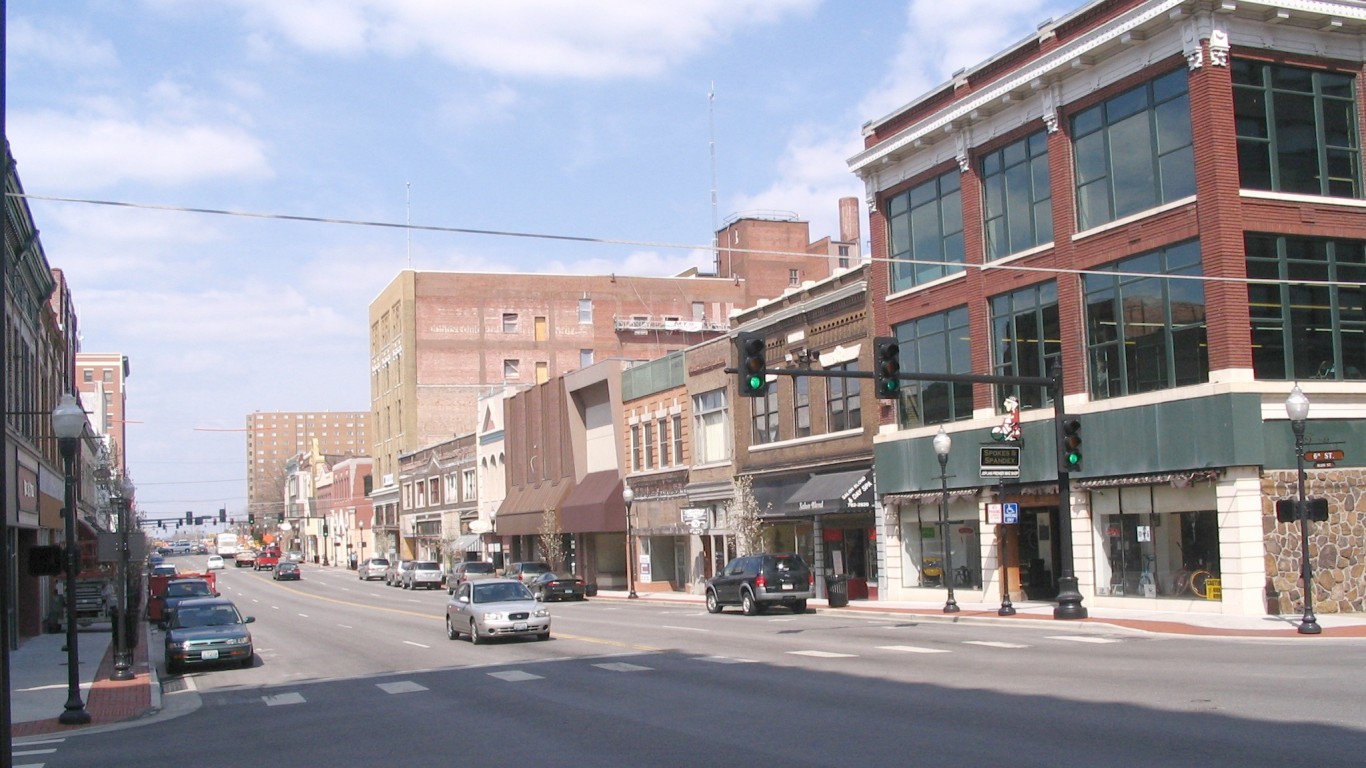
25. Joplin, MO
> White-collar sector employment: 34.2% (lowest 10%)
> Avg. monthly wage, 22-24 year olds: $1,702
> Poverty rate: 16.7%
> June unemployment rate: 3.2% (lowest 20%)
> Adults with bachelor’s degree: 20.0% (lowest 20%)
[in-text-ad]

24. Savannah, GA
> White-collar sector employment: 36.7%
> Avg. monthly wage, 22-24 year olds: $1,576 (bottom 20%)
> Poverty rate: 14.2%
> June unemployment rate: 4.0%
> Adults with bachelor’s degree: 31.0%

23. Sumter, SC
> White-collar sector employment: 36.8%
> Avg. monthly wage, 22-24 year olds: $1,576 (bottom 20%)
> Poverty rate: 21.2% (highest 10%)
> June unemployment rate: 4.4%
> Adults with bachelor’s degree: 19.5% (lowest 20%)
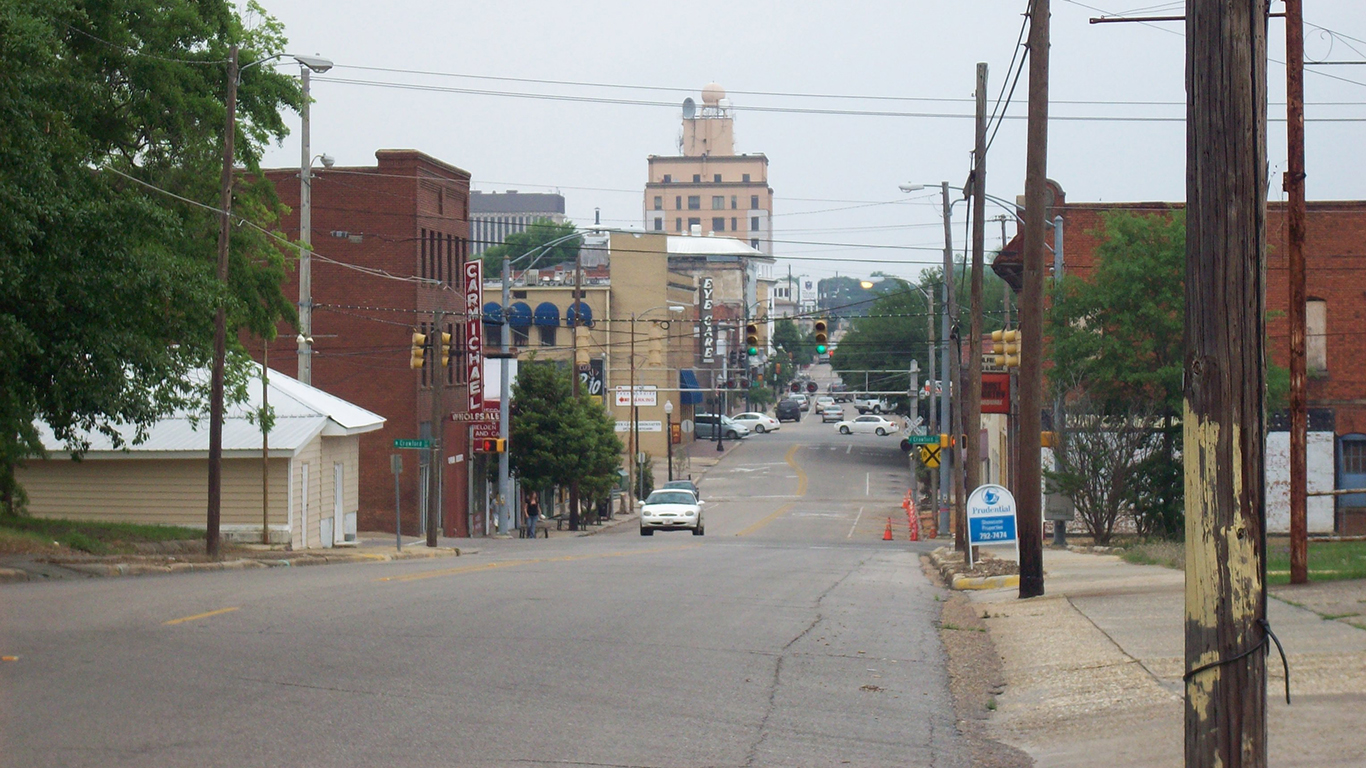
22. Dothan, AL
> White-collar sector employment: 36.3% (lowest 20%)
> Avg. monthly wage, 22-24 year olds: $1,589 (bottom 20%)
> Poverty rate: 19.5% (highest 20%)
> June unemployment rate: 5.0%
> Adults with bachelor’s degree: 17.6% (lowest 10%)
[in-text-ad-2]

21. Yakima, WA
> White-collar sector employment: 30.7% (lowest 10%)
> Avg. monthly wage, 22-24 year olds: $1,801
> Poverty rate: 18.0%
> June unemployment rate: 5.2% (highest 20%)
> Adults with bachelor’s degree: 15.9% (lowest 10%)

20. Hattiesburg, MS
> White-collar sector employment: 40.7%
> Avg. monthly wage, 22-24 year olds: $1,402 (bottom 10%)
> Poverty rate: 19.8% (highest 20%)
> June unemployment rate: 5.0%
> Adults with bachelor’s degree: 29.0%
[in-text-ad]
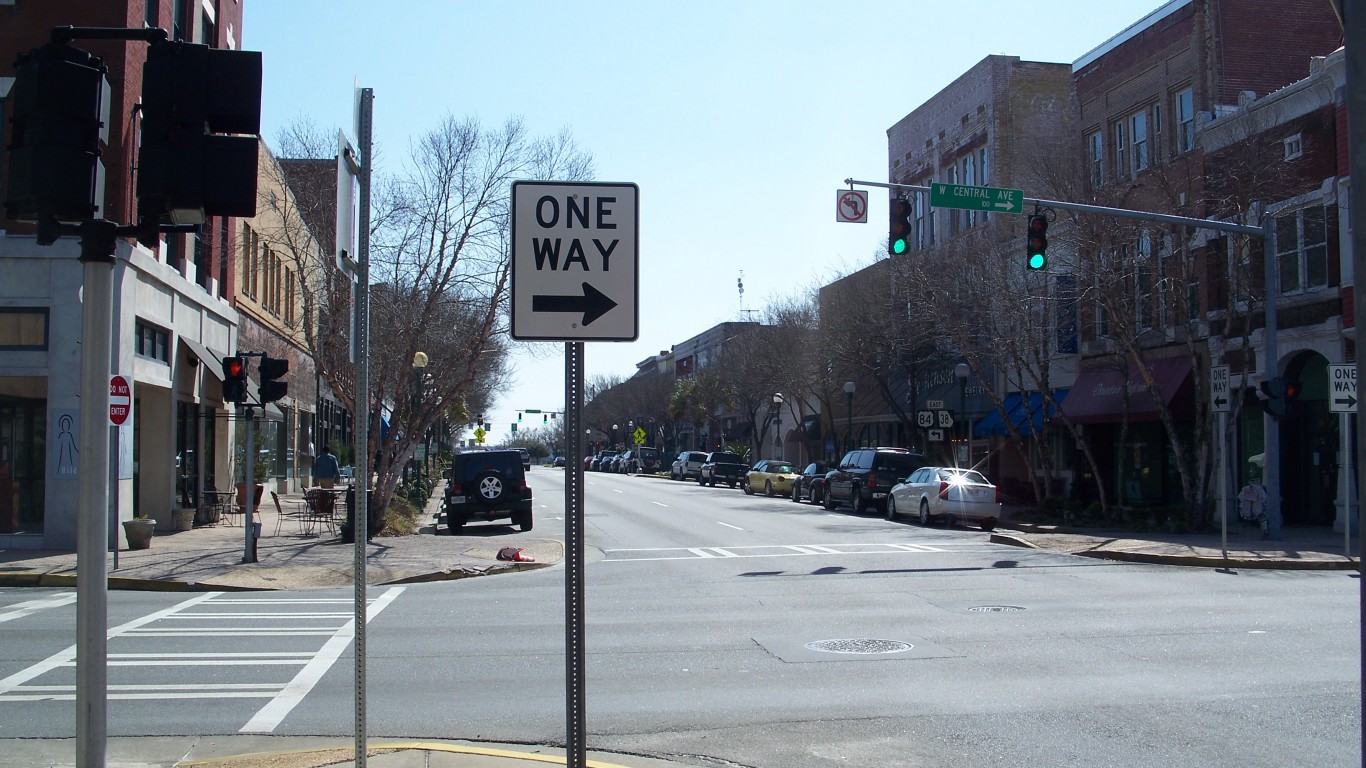
19. Valdosta, GA
> White-collar sector employment: 40.0%
> Avg. monthly wage, 22-24 year olds: $1,404 (bottom 10%)
> Poverty rate: 22.6% (highest 10%)
> June unemployment rate: 4.4%
> Adults with bachelor’s degree: 22.9%
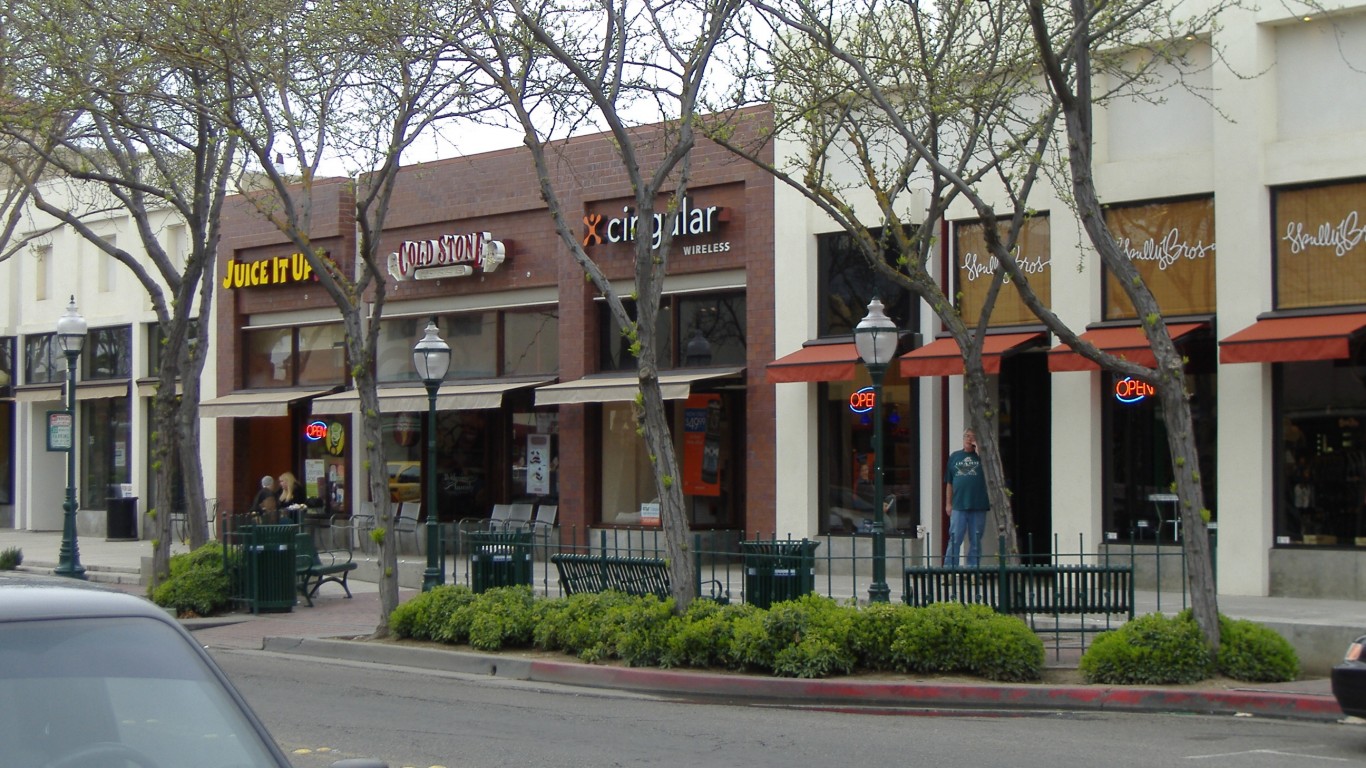
18. Merced, CA
> White-collar sector employment: 33.1% (lowest 10%)
> Avg. monthly wage, 22-24 year olds: $1,689
> Poverty rate: 20.3% (highest 10%)
> June unemployment rate: 8.6% (highest 10%)
> Adults with bachelor’s degree: 13.5% (lowest 10%)

17. Florence-Muscle Shoals, AL
> White-collar sector employment: 33.6% (lowest 10%)
> Avg. monthly wage, 22-24 year olds: $1,671
> Poverty rate: 15.7%
> June unemployment rate: 5.5% (highest 20%)
> Adults with bachelor’s degree: 20.8%
[in-text-ad-2]

16. Myrtle Beach-Conway-North Myrtle Beach, SC-NC
> White-collar sector employment: 35.8% (lowest 20%)
> Avg. monthly wage, 22-24 year olds: $1,459 (bottom 10%)
> Poverty rate: 15.1%
> June unemployment rate: 4.1%
> Adults with bachelor’s degree: 23.8%

15. Albany, GA
> White-collar sector employment: 37.3%
> Avg. monthly wage, 22-24 year olds: $1,512 (bottom 10%)
> Poverty rate: 25.0% (highest 10%)
> June unemployment rate: 5.2% (highest 20%)
> Adults with bachelor’s degree: 18.6% (lowest 20%)
[in-text-ad]

14. Hickory-Lenoir-Morganton, NC
> White-collar sector employment: 31.0% (lowest 10%)
> Avg. monthly wage, 22-24 year olds: $1,765
> Poverty rate: 15.8%
> June unemployment rate: 3.9%
> Adults with bachelor’s degree: 17.0% (lowest 10%)
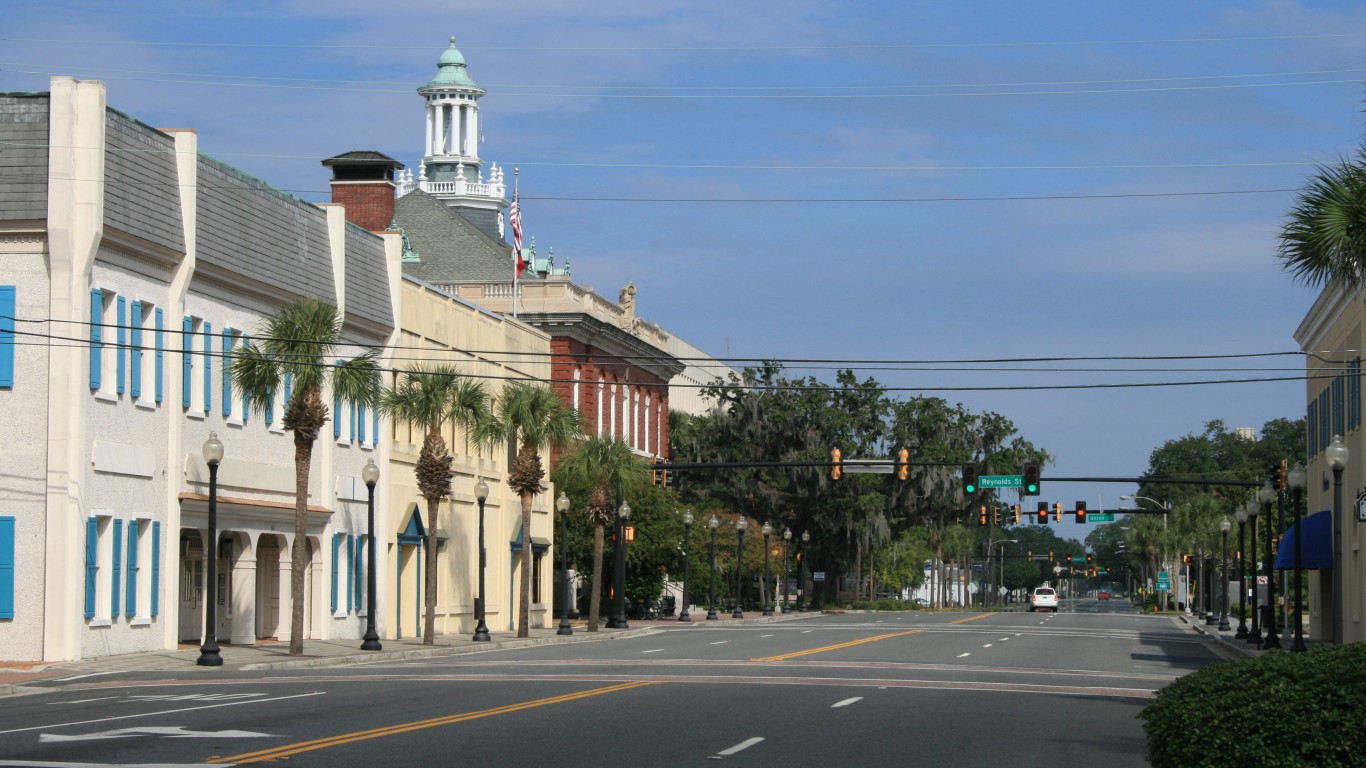
13. Brunswick, GA
> White-collar sector employment: 35.9% (lowest 20%)
> Avg. monthly wage, 22-24 year olds: $1,517 (bottom 10%)
> Poverty rate: 20.9% (highest 10%)
> June unemployment rate: 4.0%
> Adults with bachelor’s degree: 23.1%

12. Yuba City, CA
> White-collar sector employment: 33.8% (lowest 10%)
> Avg. monthly wage, 22-24 year olds: $1,605 (bottom 20%)
> Poverty rate: 17.1%
> June unemployment rate: 7.2% (highest 10%)
> Adults with bachelor’s degree: 17.2% (lowest 10%)
[in-text-ad-2]

11. Visalia-Porterville, CA
> White-collar sector employment: 31.9% (lowest 10%)
> Avg. monthly wage, 22-24 year olds: $1,651
> Poverty rate: 25.2% (highest 10%)
> June unemployment rate: 9.6% (highest 10%)
> Adults with bachelor’s degree: 13.7% (lowest 10%)
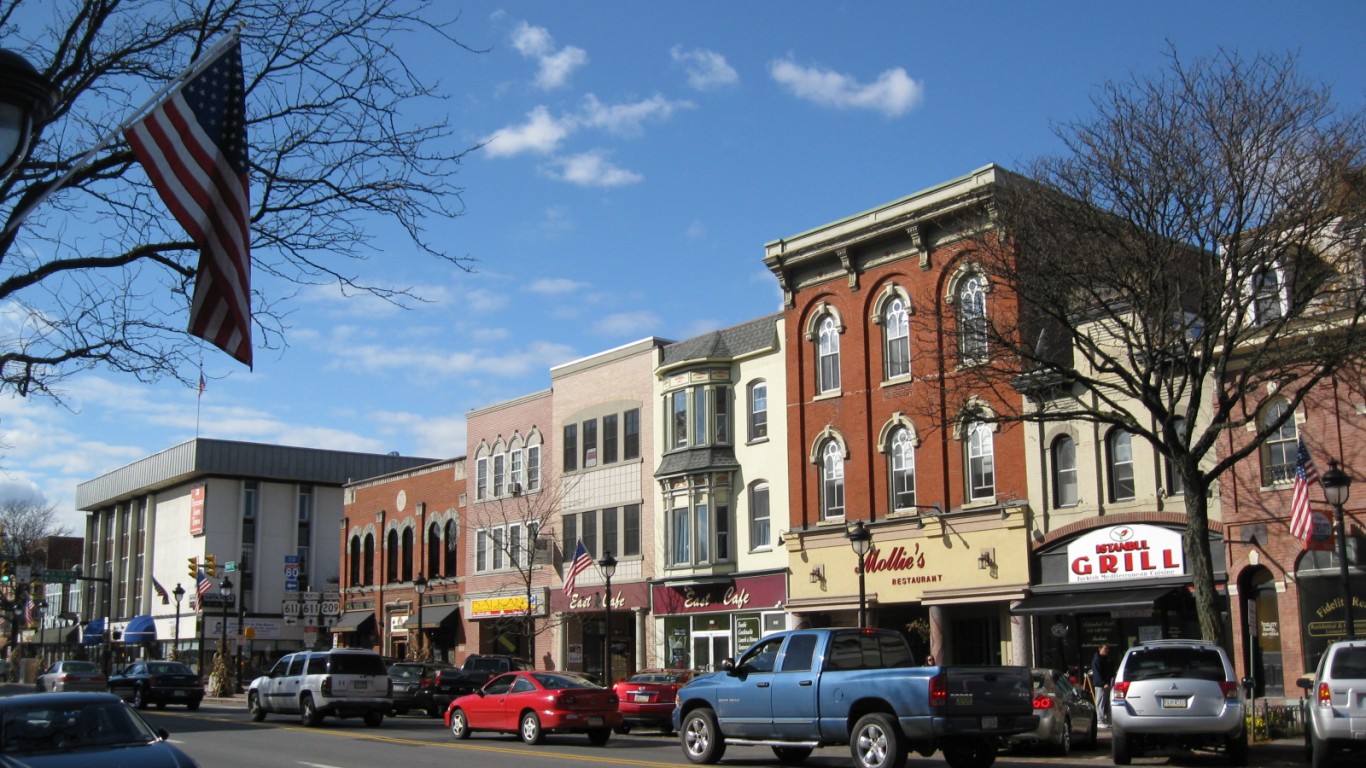
10. East Stroudsburg, PA
> White-collar sector employment: 35.4% (lowest 20%)
> Avg. monthly wage, 22-24 year olds: $1,557 (bottom 10%)
> Poverty rate: 11.4%
> June unemployment rate: 5.2% (highest 20%)
> Adults with bachelor’s degree: 25.6%
[in-text-ad]

9. Warner Robins, GA
> White-collar sector employment: 34.8% (lowest 20%)
> Avg. monthly wage, 22-24 year olds: $1,528 (bottom 10%)
> Poverty rate: 18.7% (highest 20%)
> June unemployment rate: 4.3%
> Adults with bachelor’s degree: 26.8%

8. Cleveland, TN
> White-collar sector employment: 34.7% (lowest 20%)
> Avg. monthly wage, 22-24 year olds: $1,564 (bottom 20%)
> Poverty rate: 13.0%
> June unemployment rate: 4.4%
> Adults with bachelor’s degree: 21.4%

7. Dalton, GA
> White-collar sector employment: 23.6% (lowest 10%)
> Avg. monthly wage, 22-24 year olds: $1,960 (top 20%)
> Poverty rate: 18.4% (highest 20%)
> June unemployment rate: 4.8%
> Adults with bachelor’s degree: 11.8% (lowest 10%)
[in-text-ad-2]

6. Anniston-Oxford-Jacksonville, AL
> White-collar sector employment: 33.2% (lowest 10%)
> Avg. monthly wage, 22-24 year olds: $1,536 (bottom 10%)
> Poverty rate: 16.3%
> June unemployment rate: 5.8% (highest 10%)
> Adults with bachelor’s degree: 16.5% (lowest 10%)

5. Yuma, AZ
> White-collar sector employment: 32.3% (lowest 10%)
> Avg. monthly wage, 22-24 year olds: $1,711
> Poverty rate: 18.0%
> June unemployment rate: 19.2% (highest 10%)
> Adults with bachelor’s degree: 15.4% (lowest 10%)
[in-text-ad]

4. El Centro, CA
> White-collar sector employment: 35.6% (lowest 20%)
> Avg. monthly wage, 22-24 year olds: $1,435 (bottom 10%)
> Poverty rate: 24.6% (highest 10%)
> June unemployment rate: 18.1% (highest 10%)
> Adults with bachelor’s degree: 13.9% (lowest 10%)
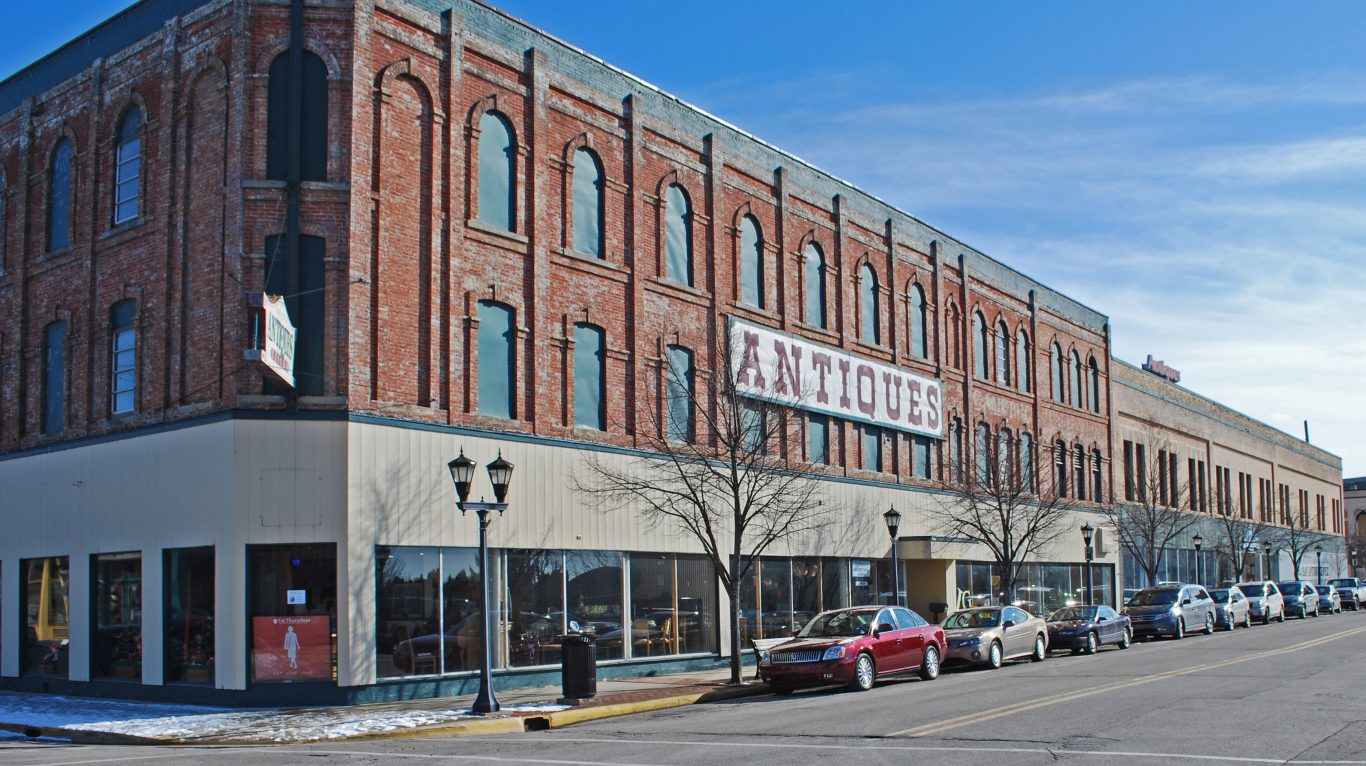
3. Bay City, MI
> White-collar sector employment: 33.9% (lowest 10%)
> Avg. monthly wage, 22-24 year olds: $1,436 (bottom 10%)
> Poverty rate: 15.9%
> June unemployment rate: 5.1%
> Adults with bachelor’s degree: 17.7% (lowest 10%)
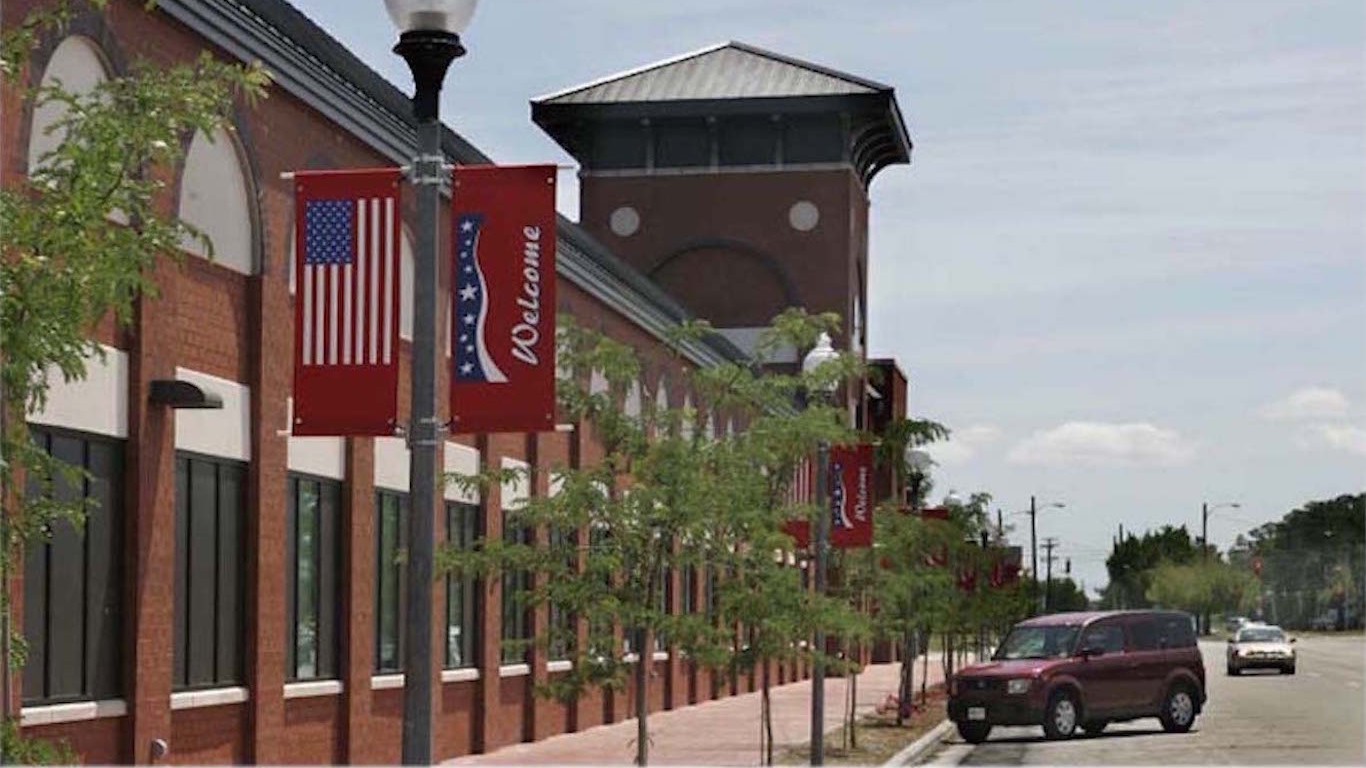
2. Jacksonville, NC
> White-collar sector employment: 33.1% (lowest 10%)
> Avg. monthly wage, 22-24 year olds: $1,398 (bottom 10%)
> Poverty rate: 13.1%
> June unemployment rate: 4.6%
> Adults with bachelor’s degree: 18.6% (lowest 20%)
[in-text-ad-2]
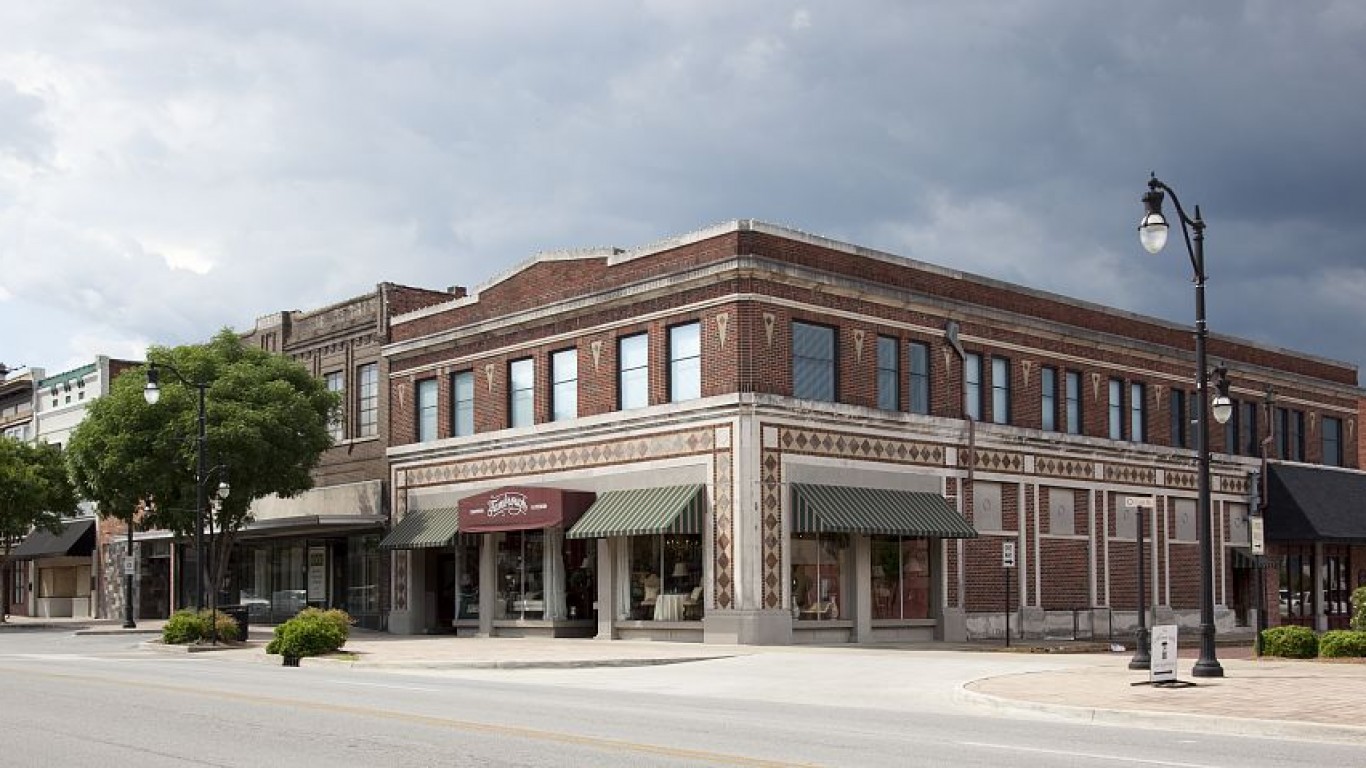
1. Gadsden, AL
> White-collar sector employment: 29.6% (lowest 10%)
> Avg. monthly wage, 22-24 year olds: $1,548 (bottom 10%)
> Poverty rate: 16.7%
> June unemployment rate: 5.1%
> Adults with bachelor’s degree: 15.6% (lowest 10%)
To identify the worst cities to find a job for new grads, 24/7 Wall St. created an index of three components: job growth, wages for young workers, and the concentration of jobs in U.S. metropolitan areas.
To construct the index, we used the U.S. Bureau of Labor Statistics Quarterly Workforce Indicators (QWI) extraction tool. From the QWI, our index included average monthly wages for 22- to 24-year-old workers of all education levels employed in all industries for at least one quarter obtained from the QWI. We also reviewed new jobs added in these metropolitan areas in the most recent quarter less job losses in the same quarter. All QWI data is for the first quarter of 2017 for all states except Alaska, which is for Q1 2016.
The final component of our index was white collar employment as a share of total employment, which is the share of total employment that is employed in Business and Professional Services, Information, Financial Activities, and Educational Services in each metropolitan statistical area. These figures comes from the ACS 2016 and is the percent of total employment that are employed in Business and Professional Services, Information, Financial Activities, and Educational Services. Metropolitan areas with more job losses than job gains for 22-24 year olds, low monthly wages for 22-24 year olds, and relatively low concentrations of jobs in typically white-collar industries ranked worse.
We also considered the percentage of adults in each metropolitan area with at least a bachelor’s degree and the percentage of people with incomes below the poverty line, both of which came from the U.S. Census Bureau’s 2016 American Community Survey.
The thought of burdening your family with a financial disaster is most Americans’ nightmare. However, recent studies show that over 100 million Americans still don’t have proper life insurance in the event they pass away.
Life insurance can bring peace of mind – ensuring your loved ones are safeguarded against unforeseen expenses and debts. With premiums often lower than expected and a variety of plans tailored to different life stages and health conditions, securing a policy is more accessible than ever.
A quick, no-obligation quote can provide valuable insight into what’s available and what might best suit your family’s needs. Life insurance is a simple step you can take today to help secure peace of mind for your loved ones tomorrow.
Click here to learn how to get a quote in just a few minutes.
Thank you for reading! Have some feedback for us?
Contact the 24/7 Wall St. editorial team.